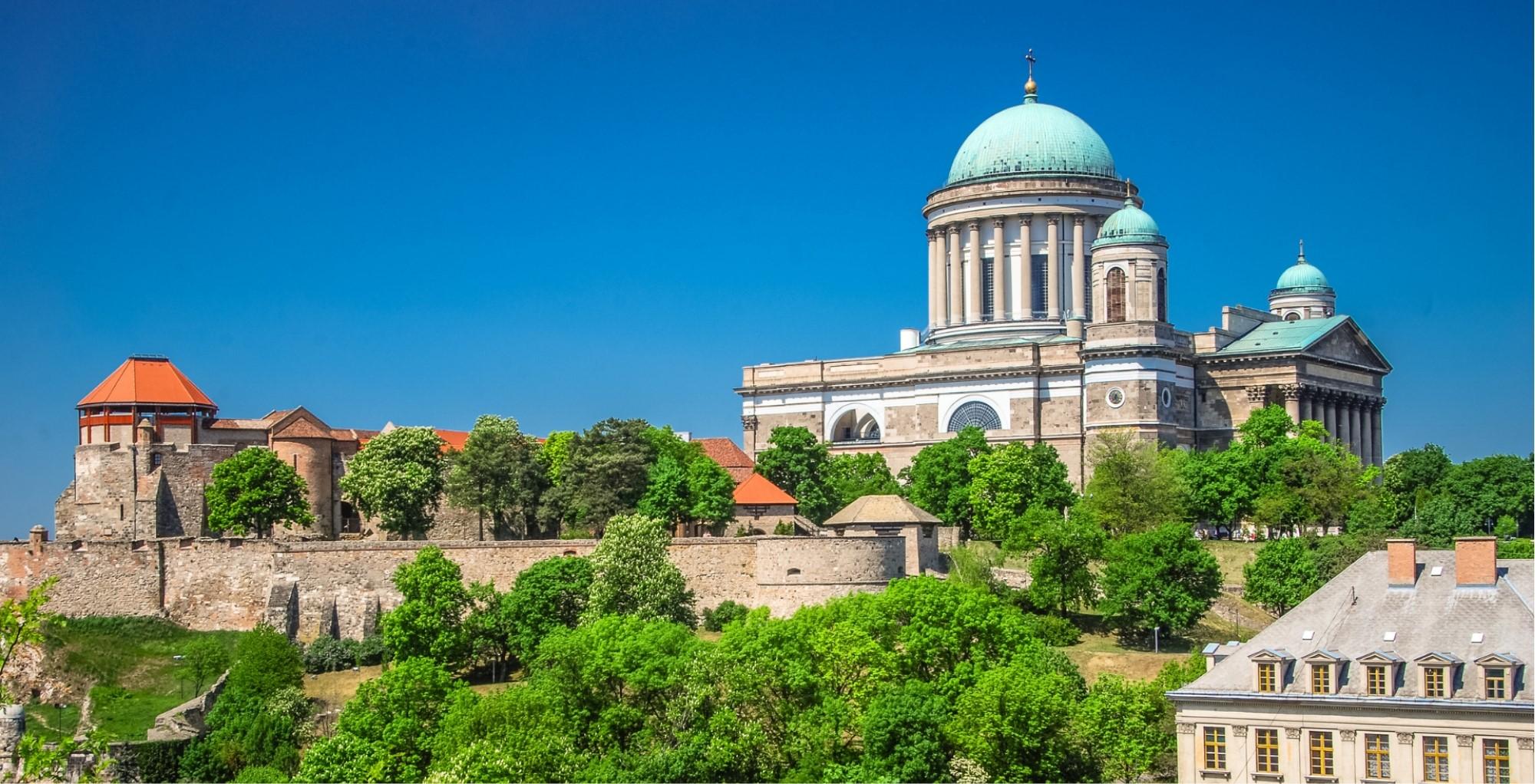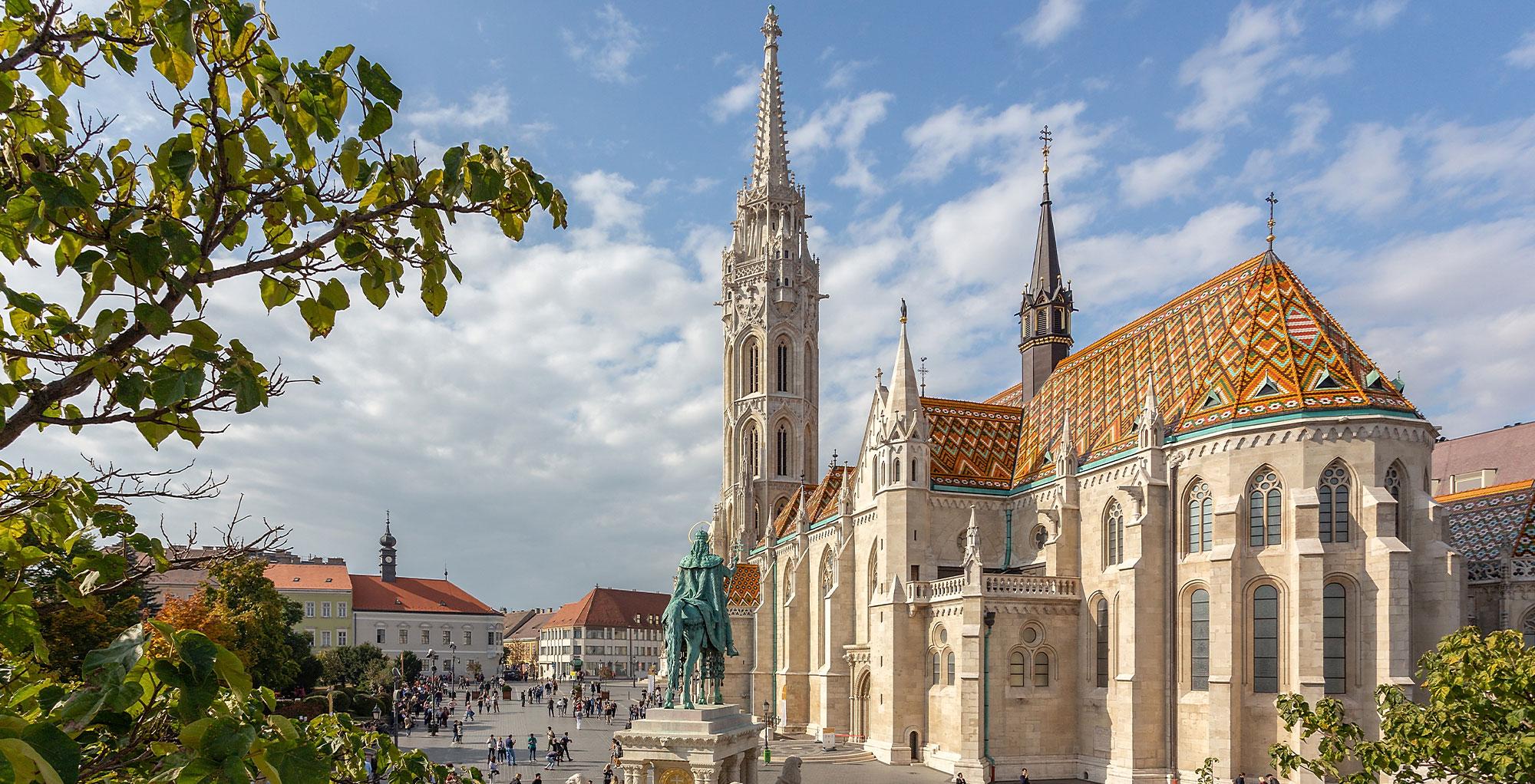History of our Archdiocese
Below is a brief overview of the formation of the present-day Archdiocese of Esztergom-Budapest, while we try to present the archdiocese’s fate, its most well-known archbishops and their work in the light of the history of Hungary.
The Archdiocese of Esztergom was one of the ten dioceses founded by Saint Stephen, which had the rank of archbishopric since its foundation, and the Archbishop of Esztergom was also given the privilege of crowning the Hungarian kings. The cathedral built here was consecrated in honour of Saint Adalbert around 1010, perhaps in gratitude for the great role Adalbert’s immediate colleagues and disciples played in the conversion of Hungarians. At the time of the creation of the archdiocese, the kingdom was given the northern, north-western border areas.
On 9 August 1543, after a long and hard siege, the archbishop’s seat fell to the Turks. The archbishop and the chaplaincy fled before the siege closed and moved their headquarters to Nagyszombat, where their successors remained until 1820.
The period after the Battle of Mohács in 1526 was a very difficult one for the current archpastor. The dual election of kings, deteriorating public security and the continued Turkish occupation of the archdiocese made pastoral care difficult. Since it was impossible to send priests to the territory of the conquest, the teachings of Martin Luther soon appeared and spread rapidly here in the East. All the archbishops tried, to the best of their abilities, to suppress the spread of the Reformation. For example, Miklós Oláh (1553-1568) held synods to inspire and encourage the priests, obliged the parish priests to establish schools, and got the most militant proponents of the Counter-Reformation, the Jesuits, to settle in Nagyszombat, and entrusted them with the leadership of the seminary set up to remedy the severe shortage of priests.
The best-known opponent of the Reformation in Hungary was Péter Pázmány, who held the post of archbishop between 1616 and 1637. Pázmány’s primary goal was to restore priesthood training in the archdiocese, so in 1623 he founded the still existing Pazmanianum in Vienna and reorganised the seminary of Nagyszombat. In 1629, in accordance with the provisions of the Council of Trent, he convened a diocesan synod, in whose resolutions he precisely formulated the privileges and prerogatives of the archbishop.
Another important step taken by Pázmány was to unify the liturgy: he made the use of the Roman Missal obligatory everywhere. Later, on 12 May 1635, he founded a university in Nagyszombat, and started a philosophical and theological training course, which he entrusted to the Jesuits, following the European model. The university moved to Buda in 1777, then to Pest, took its founder’s name in 1921, and since the name change in 1950 has been one of the most popular universities in Hungary, Eötvös Loránd University.
The move back from Nagyszombat to Esztergom was finally made by Sándor Rudnay (1819-1831), who moved to his old new seat in May 1820 in the course of a national celebration. It was he who also began planning the rebuilding of the cathedral, which was destroyed during the Turkish occupation. Construction continued after the death of the archbishop and the assassination of the architect in charge, János Packh. The new archbishop, József Kopácsy (1839-1847), entrusted the work to the excellent engineer József Hild. But it was Kopácsy who also built the bridge between Esztergom and Párkány, which handled a large volume of freight traffic and could be opened to ships. He also founded the Good and Cheap Publishing Association in 1842, which from 1848 to the present day operates under the name Saint Stephen Association.
It was his successor, János Scitovszky (1849-1866), who had the opportunity to consecrate the cathedral in Esztergom on 31 August 1856, which had been under construction for 30 years but was not yet fully completed. Franz Joseph, who was not yet crowned King of Hungary, and his wife Queen Elizabeth were invited to the event. The primate asked his friend Ferenc Liszt to compose a Mass especially for the occasion.
The construction of the Basilica of Esztergom was completed in 1886, during the reign of Archbishop János Simor. He opened the Christian Museum in 1876 and built the primate’s palace and library. Kolos Vaszary (1891-1912) was already in the archbishop’s chair when the millennium of the Hungarian conquest was celebrated, and Pope Leo XIII, through his intercession, allowed a special feast in honour of Our Lady.
The coronation of our last Hungarian king took place during the reign of Archbishop János Csernoch (1912-1927), who placed the Holy Crown on the head of Charles I of Austria on 30 December 1916 in Matthias Church. A few years after the war and the Treaty of Trianon, the Archdiocese of Esztergom lost three quarters of its territory. During the Soviet Republic and the proletarian dictatorship, the priests had to leave the palace in Esztergom, and the communists nationalized it together with the collection of the Christian Museum. After the end of the Red Terror, Csernoch was able to return to its capital, and even managed to recover the stolen art treasures.
One of the most prominent ecclesiastical events in Hungary between the two world wars was the International Eucharistic Congress in 1938, which took place during the archbishopric of Jusztinián Serédi. After Serédi’s death in 1945, perhaps the most famous archbishop in Hungarian history was appointed: József Mindszenty. He always spoke out against the growing Soviet and communist influence in Hungary after the Second World War, consistently standing up for his church and its adherents. The crusade against Mindszenty culminated in his arrest on 26 December 1948, after which the physically and spiritually tortured prelate was sentenced to life imprisonment in a show trial.
One of the conditions of his release was that Pope Paul VI would recall him from the archbishopric. The Holy Father therefore called on him to resign in 1973, but Mindszenty refused the request, citing pastoral reasons. Finally, on 18 December 1974, the Pope declared the archbishopric vacant. Mindszenty died on 6 May 1975 in Vienna and was buried in Mariazell. In 1991, his remains were repatriated and laid to rest in the crypt of the Basilica of Esztergom.
His successor, Cardinal and Archbishop László Lékai (1976-1986) led his archdiocese throughout the Kádár regime. One of his greatest successes was to defeat the Office for Religious Affairs and get hundreds of young theologians trained each year at the Academy of Theology in Budapest (now the Faculty of Theology of Pázmány Péter Catholic University), who could later teach theology.
During the time of László Paskai (1987-2002), who succeeded him as Archbishop, a number of very important events occurred, which influenced the fate of the whole archdiocese. In 1989, the Third Republic was proclaimed, and in 1990 diplomatic channels were officially opened between our country and the Vatican. As a result, Apostolic Nuncio Angelo Acerbi, Ambassador of the Holy See, and Pope John Paul II arrived in 1991.
In his 1993 decree Hungarorum Gens, the Holy Father redrew the boundaries of Hungary’s dioceses and created new dioceses, making the Archdiocese of Esztergom the Archdiocese of Esztergom-Budapest. It was at this time that St. Stephen’s Basilica in Budapest was given the status of a co-cathedral, and the Archbishop moved from Esztergom to the primate’s palace in Buda Castle. As his successor, the Holy Father appointed Péter Erdő, Auxiliary Bishop of Székesfehérvár, who has been fulfilling his duties as Archbishop since January 2003.



